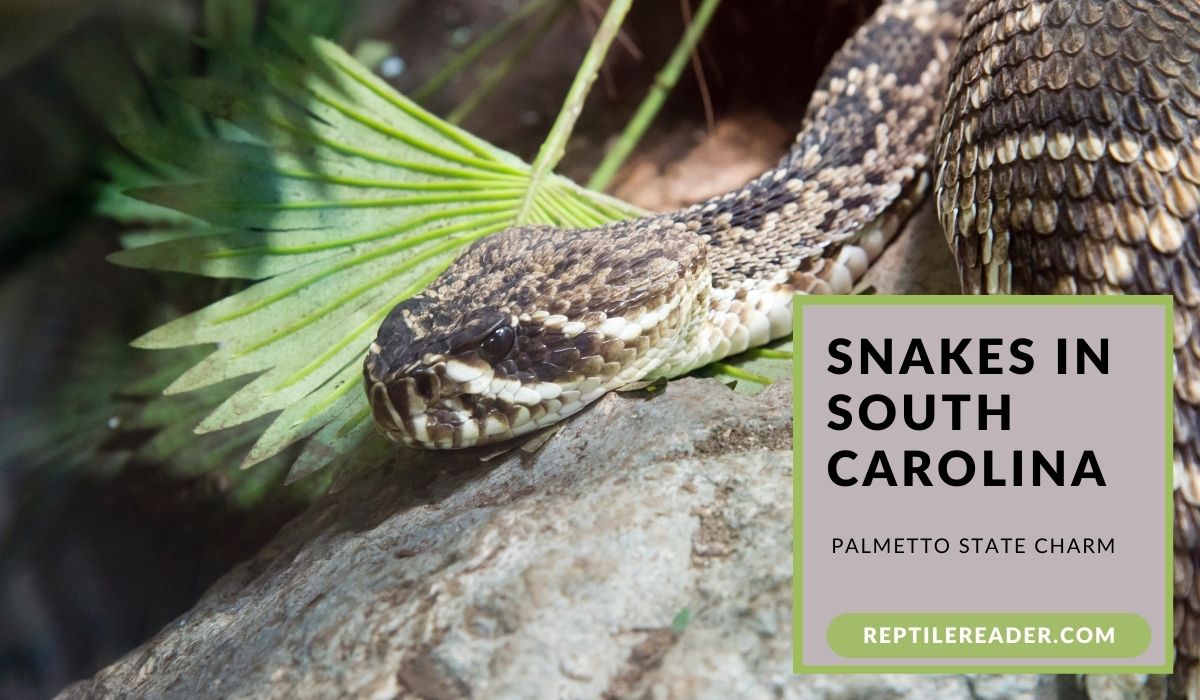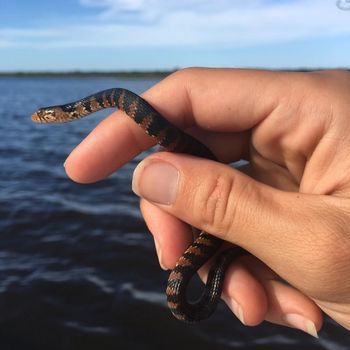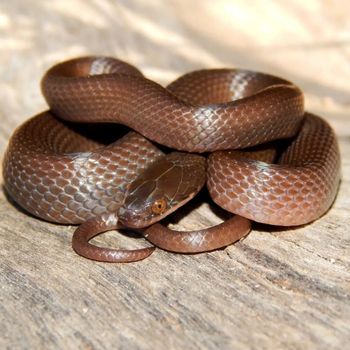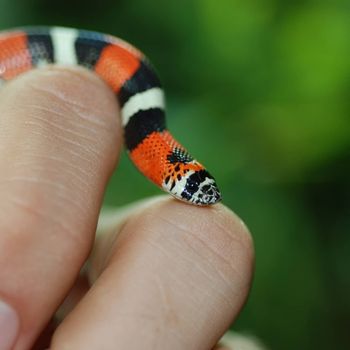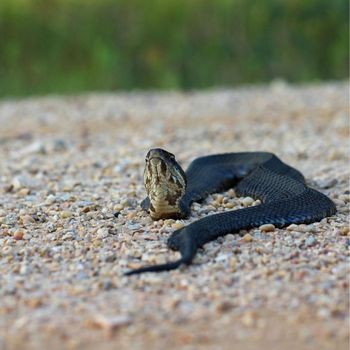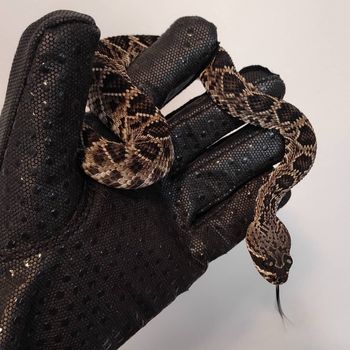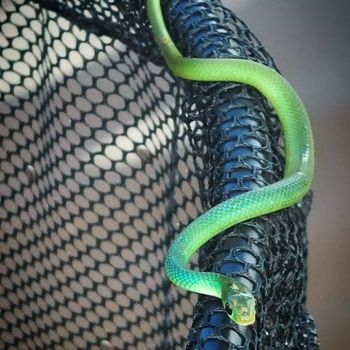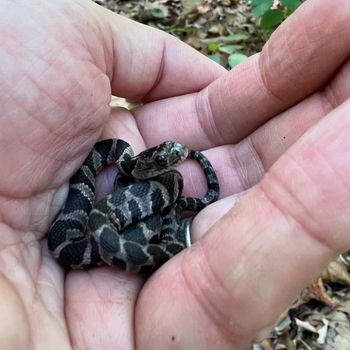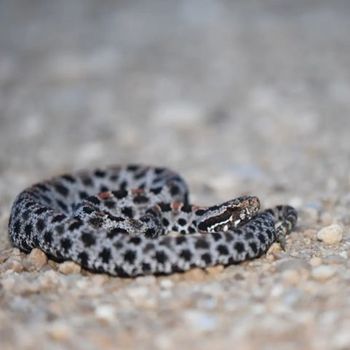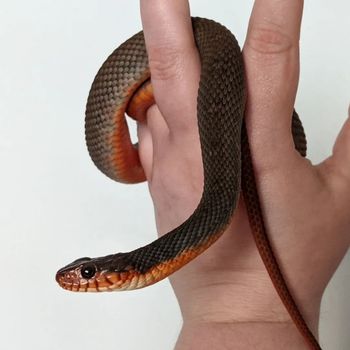Snakes in South Carolina: Palmetto State Charm
Have you ever wondered just how many slithering serpents call the Palmetto State their home? Well, let me tell you — South Carolina is simply crawling with snakes!
In fact, there are 38 different species of snakes that can be found in South Carolina, each with their unique characteristics and habitats. Out of these, there are 11 species that are particularly interesting and worth knowing about.
So, whether you’re an avid outdoorsman or just a curious mind wanting to learn more about these fascinating creatures, read on as we explore the various snakes you might encounter in South Carolina!
| # | Name | Details | Image |
| 1 | Banded Water Snake (Nerodia fasciata) |
| 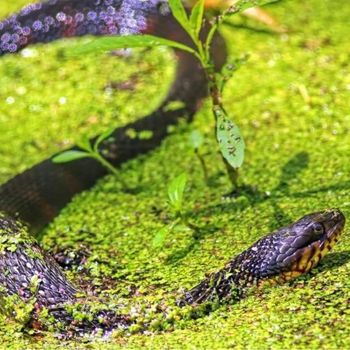 |
| 2 | Brown Water Snake (Lycodonomorphus rufulus) |
| 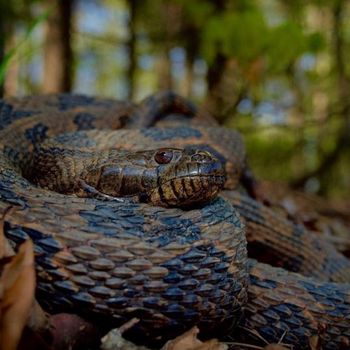 |
| 3 | Copperhead (Agkistrodon contortrix) |
| 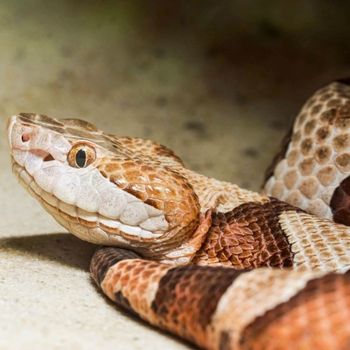 |
| 4 | Coral Snake (Micrurus fulvius) |
| 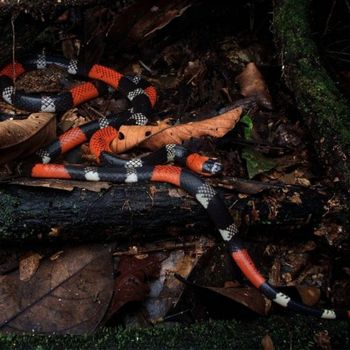 |
| 5 | Cottonmouth (Agkistrodon piscivorus) |
| 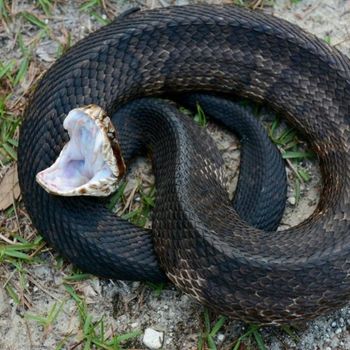 |
| 6 | Eastern Diamondback Rattlesnake (Crotalus adamanteus) |
| 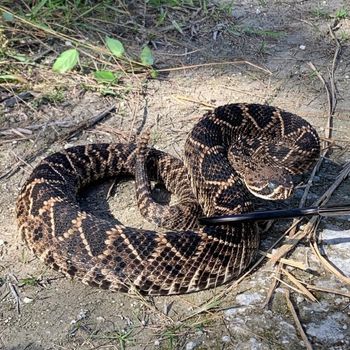 |
| 7 | Green Water Snake (Natrix cyclopion) |
|  |
| 8 | Midland Water Snake (Nerodia sipedon pleuralis) |
| 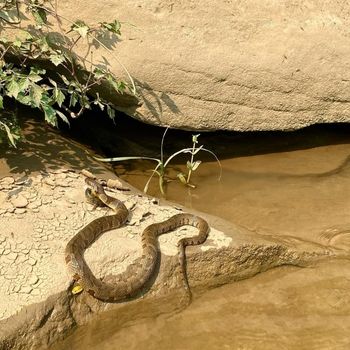 |
| 9 | Northern Water Snake (Nerodia sipedon) |
|  |
| 10 | Pygmy Rattlesnake (Sistrurus miliarius) |
|  |
| 11 | Red-Bellied Water Snake (Nerodia erythrogaster) |
|  |
11 Snakes You Can Find in South Carolina
In the state of South Carolina, a fascinating array of serpents can be found slithering through its diverse landscapes. From venomous to harmless, each species has its unique story to tell. Below, we’ll explore the wonders of these often misunderstood creatures of South Carolina, from their natural habitats and behaviors to the challenges they face in our changing world.
1. Banded Water Snake
- Scientific Name: Nerodia fasciata
- Common Name: Banded water snake
- Size: Up to 4 feet (1.2 meters)
- Natural Habitat: Aquatic habitats, such as lakes, rivers, and swamps
- Color: Gray to reddish-brown with dark crossbands
- Habitat: Aquatic habitats, such as lakes, rivers, and swamps
- Maximum Size: Up to 4 feet (1.2 meters)
- Diet: Frogs, fish, and small invertebrates
- Reproduction: Lay eggs in clutches of 10-40
- Venom: Non-venomous
- Conservation: Least concern
The Banded Water Snake (Nerodia fasciata) is a non-venomous, semi-aquatic reptile growing up to 4 feet (1.2 meters) in length. Known for its distinctive dark crossbands on a gray to reddish-brown body, it thrives in aquatic habitats like lakes, rivers, and swamps. They are nocturnal predators feasting on frogs, fish, and small invertebrates. Mating season sees these snakes laying eggs in clutches of 10-40. Currently, the Banded Water Snake’s conservation status is classified as least concern.
2. Brown Water Snake
- Scientific Name: Lycodonomorphus rufulus
- Common Name: Brown water snake
- Size: Up to 2.6 feet (0.8 meters)
- Natural Habitat: Aquatic habitats, such as streams, ponds, and marshes
- Color: Brown with darker bands and a yellow belly
- Habitat: Aquatic habitats, such as streams, ponds, and marshes
- Maximum Size: Up to 2.6 feet (0.8 meters)
- Diet: Fish, frogs, and tadpoles
- Reproduction: Lay eggs in clutches of around 9-11
- Venom: Non-venomous
- Conservation: Least concern
The Lycodonomorphus rufulus, commonly known as the Brown Water Snake, can grow up to 2.6 feet in length. It is characterized by its brown coloring, darker bands, and a yellow belly. The snake that calls South Carolina its home predominantly inhabits aquatic environments such as streams, ponds, and marshes. Although nocturnal and terrestrial, it is often found basking on rocks and logs during daytime. Its diet mainly consists of fish, frogs, and tadpoles. The snake lays eggs in clutches of 9-11, is non-venomous, and is considered to have a conservation status of least concern.
3. Copperhead
- Scientific Name: Agkistrodon contortrix
- Common Name: Copperhead
- Size: Up to 3 feet (0.9 meters)
- Natural Habitat: Forests, swamps, rocky terrain, and riverside habitats
- Color: Coppery-brown with reddish-brown or dark hourglass-shaped bands
- Habitat: Forests, swamps, rocky terrain, and riverside habitats
- Maximum Size: Up to 3 feet (0.9 meters)
- Diet: Rodents, birds, frogs, and insects
- Reproduction: Give live birth to 2-18 young in late summer or early fall
- Venom: Venomous, but relatively mild compared to other venomous snakes
- Conservation: Least concern
The Copperhead (Agkistrodon contortrix) is a venomous snake up to 3 feet (0.9 meters) long, known for its coppery-brown coloring with reddish-brown or dark hourglass-shaped bands. Inhabiting forests, swamps, rocky terrain, and riverside habitats, these solitary and primarily nocturnal creatures prey on rodents, birds, frogs, and insects. Copperheads give live birth to 2-18 young in late summer or early fall. Though venomous, their venom is relatively mild compared to other venomous snakes. Their conservation status is of least concern.
4. Coral Snake
- Scientific Name: Micrurus fulvius
- Common Name: Eastern coral snake
- Size: Up to 23.6 – 47.2 inches (60 – 120 cm)
- Natural Habitat: Forests, wooded areas, and residential areas near woodlands
- Color: Black, yellow, and red bands
- Habitat: Forests, wooded areas, and residential areas near woodlands
- Maximum Size: Up to 23.6 – 47.2 inches (60 – 120 cm)
- Diet: Small lizards, frogs, and other snakes
- Reproduction: Lay eggs in clutches of 3-12
- Venom: Neurotoxic venom
- Conservation: Least concern
The Eastern Coral Snake (Micrurus fulvius) is a vibrant, banded reptile measuring 23.6-47.2 inches (60-120 cm) in length. With striking black, yellow, and red bands, it inhabits forests, wooded areas, and occasionally residential locales near woodlands of South Carolina. Its elusive behavior includes burrowing and adopting a nocturnal lifestyle during warmer months. The Coral Snake preys on small lizards, frogs, and other snakes. Females lay egg clutches of 3-12 offspring. Carrying potent neurotoxic venom, this species currently holds a conservation status of “Least Concern.”
5. Cottonmouth
- Scientific Name: Agkistrodon piscivorus
- Common Name: Cottonmouth, water moccasin
- Size: 30-48 inches (76-122 cm)
- Natural Habitat: Swamps, marshes, rivers, and ponds
- Color: Olive, brown, or black with dark bands
- Habitat: Swamps, marshes, rivers, and ponds
- Maximum Size: 30-48 inches (76-122 cm)
- Diet: Fish, amphibians, rodents, birds, and other reptiles
- Reproduction: Give birth to live young (ovoviviparous), 1-16 offspring
- Venom: Venomous, hemotoxic venom
- Conservation: Least concern
The Cottonmouth (Agkistrodon piscivorus), also known as Water Moccasin, is a venomous snake measuring 30-48 inches (76-122 cm) in length. It features an olive, brown, or black coloration with dark bands. These semi-aquatic, nocturnal reptiles inhabit swamps, marshes, rivers, and ponds. Notably aggressive when threatened, their diet consists of fish, amphibians, rodents, birds, and other reptiles. Cottonmouths give birth to live young (ovoviviparous), producing 1-16 offspring. Their venom is hemotoxic, but their conservation status remains of least concern.
6. Eastern Diamondback Rattlesnake
- Scientific Name: Crotalus adamanteus
- Common Name: Eastern diamondback rattlesnake
- Size: Up to 8 feet (2.4 meters)
- Natural Habitat: Dry forests, scrub, and coastal areas
- Color: Brown, yellow, and gray with diamond-shaped patterns
- Habitat: Dry forests, scrub, and coastal areas
- Maximum Size: Up to 8 feet (2.4 meters)
- Diet: Rodents, rabbits, small mammals, and birds
- Reproduction: Ovoviviparous, giving birth to 6-21 live young
- Venom: Venomous, potentially dangerous to humans
- Conservation: Least concern
The Eastern Diamondback Rattlesnake (Crotalus adamanteus) is a large, venomous serpent found primarily in dry forests, scrublands, and coastal areas. Reaching up to 8 feet (2.4 meters) in length, they exhibit a distinct coloration of brown, yellow, and gray with diamond-shaped patterns. These nocturnal and terrestrial predators primarily feed on rodents, rabbits, small mammals, and birds. Eastern Diamondbacks are ovoviviparous, giving birth to 6-21 live young. Although their venom is potentially dangerous to humans, their conservation status remains listed as least concern.
7. Green Water Snake
- Scientific Name: Natrix cyclopion
- Common Name: Green water snake
- Size: Up to 4.5 feet (1.4 meters)
- Natural Habitat: Wetland habitats, including swamps, marshes, and ponds
- Color: Greenish-brown with dark markings
- Habitat: Wetland habitats, including swamps, marshes, and ponds
- Maximum Size: Up to 4.5 feet (1.4 meters)
- Diet: Fish, amphibians, and invertebrates
- Reproduction: Viviparous, giving birth to 5-40 live young
- Venom: Non-venomous
- Conservation: Least concern
The Green Water Snake (Natrix cyclopion) is a non-venomous reptile species that can grow up to 4.5 feet (1.4 meters) in length. Characterized by their greenish-brown color and dark markings, these nocturnal and semiaquatic creatures are primarily found in wetland habitats such as swamps, marshes, and ponds. Their diet mainly consists of fish, amphibians, and invertebrates. Green Water Snakes are viviparous, giving birth to 5-40 live young at a time. Currently, their conservation status is listed as “Least Concern.”
8. Midland Water Snake
- Scientific Name: Nerodia sipedon pleuralis
- Common Name: Midland water snake
- Size: Up to 4.5 feet (1.4 meters)
- Natural Habitat: Aquatic habitats, such as lakes, ponds, rivers, and streams
- Color: Dark brown or reddish-brown with lighter banding
- Habitat: Aquatic habitats, such as lakes, ponds, rivers, and streams
- Maximum Size: Up to 4.5 feet (1.4 meters)
- Diet: Fish and amphibians
- Reproduction: Lay eggs in clutches of 10-40
- Venom: Non-venomous
- Conservation: Least concern
The Midland Water Snake (Nerodia sipedon pleuralis) is a semi-aquatic reptile that grows up to 4.5 feet (1.4 meters) and features a dark brown or reddish-brown color with lighter banding. Primarily nocturnal, they inhabit various aquatic environments, such as lakes, ponds, rivers, and streams. Their diet consists of fish and amphibians, and they lay eggs in clutches of 10-40. Although non-venomous, they are often mistakenly identified as venomous species. Their conservation status is listed as least concern.
9. Northern Water Snake
- Scientific Name: Nerodia sipedon
- Common Name: Northern water snake
- Size: Up to 4.5 feet (1.4 meters)
- Natural Habitat: Aquatic habitats, such as rivers, lakes, ponds, and marshes
- Color: Brown or gray with dark bands or blotches
- Habitat: Aquatic habitats, such as rivers, lakes, ponds, and marshes
- Maximum Size: Up to 4.5 feet (1.4 meters)
- Diet: Fish, amphibians, and invertebrates
- Reproduction: Lay eggs in clutches of 10-30
- Venom: Non-venomous
- Conservation: Least concern
The Northern Water Snake (Nerodia sipedon) is a non-venomous reptile that can grow up to 4.5 feet (1.4 meters) in length. It is characterized by its brown or gray color with dark bands or blotches. This nocturnal and semi-aquatic species can be found in a variety of aquatic habitats, including rivers, lakes, ponds, and marshes. Its diet consists of fish, amphibians, and invertebrates. Northern Water Snakes reproduce by laying eggs in clutches of 10-30, and currently have a conservation status of least concern.
10. Pygmy Rattlesnake
- Scientific Name: Sistrurus miliarius
- Common Name: Pygmy rattlesnake
- Size: Up to 24 inches (61 centimeters)
- Natural Habitat: Woodlands, grasslands, floodplains, and wetlands
- Color: Gray, tan, or reddish-brown with dark blotches
- Habitat: Woodlands, grasslands, floodplains, and wetlands
- Maximum Size: Up to 24 inches (61 centimeters)
- Diet: Small mammals, amphibians, reptiles, and insects
- Reproduction: Give birth to 5-12 live young
- Venom: Venomous, but not typically dangerous to healthy adults
- Conservation: Least concern
The Pygmy Rattlesnake (Sistrurus miliarius) is a small venomous snake residing in of South Carolina and measures up to 24 inches in length. It exhibits a gray, tan, or reddish-brown color with dark blotches along its body. Inhabiting woodlands, grasslands, floodplains, and wetlands, this nocturnal and terrestrial creature feasts on small mammals, amphibians, reptiles, and insects. The Pygmy Rattlesnake reproduces by giving birth to 5-12 live young, and while its venom is not typically dangerous to healthy adults, it should be respected. The conservation status is currently listed as least concern.
11. Red-Bellied Water Snake
- Scientific Name: Nerodia erythrogaster
- Common Name: Red-bellied water snake
- Size: Up to 40 inches (1 meter)
- Natural Habitat: Freshwater habitats, such as ponds, lakes, and rivers
- Color: Dark gray or brown with reddish-orange belly
- Habitat: Freshwater habitats, such as ponds, lakes, and rivers
- Maximum Size: Up to 40 inches (1 meter)
- Diet: Fish and amphibians
- Reproduction: Give birth to live young, 8-35 babies in a litter
- Venom: Non-venomous
- Conservation: Least concern
The Nerodia erythrogaster, commonly known as the Red-Bellied Water Snake, is a non-venomous aquatic reptile that can grow up to 40 inches in length. Featuring a dark gray or brown coloration with a distinctive reddish-orange belly, this snake thrives in freshwater habitats, such as ponds, lakes, and rivers. Primarily nocturnal, it preys on fish and amphibians. Unlike many snakes, Red-Bellied Water Snakes give birth to live young, producing 8-35 babies per litter. Their conservation status is considered to be of least concern.
Nearby States:
Final Words
All the 11 snakes have truly opened our eyes to the fascinating world of snakes found in South Carolina. Who knew there were so many different types of these slithering reptiles, each with their own unique characteristics and habitats?
Not only did we get a chance to learn about some of the more common and well-known species, but we also delved into the lesser-known and often misunderstood ones.
So, the next time you’re out and about in South Carolina, keep an eye out for these incredible creatures, and let’s continue to appreciate and protect the diverse wildlife that makes our world so interesting!
What are the similarities and differences between the snake populations in South Carolina and Georgia?
When comparing the snake populations in South Carolina and Georgia, it’s clear that both states boast a peachy southern snake diversity in georgia. However, South Carolina is home to a higher number of venomous species, while Georgia is known for its larger population of non-venomous snakes. Understanding these differences can help with snake identification and safety in both states.

